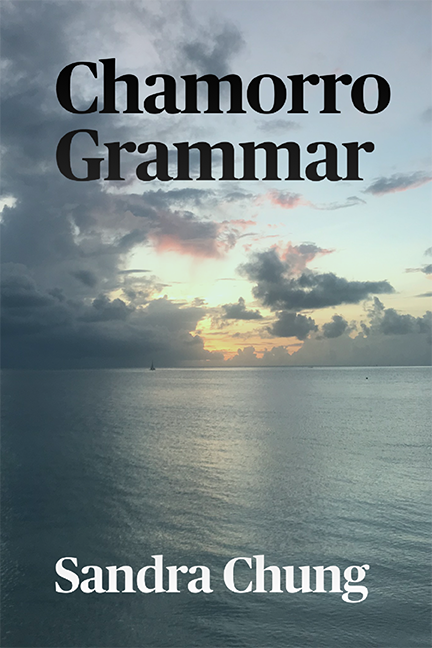“CHamoru Grammar”
as Dr. Sandra Chung
An Explanatory Note:
Dr. Sandra Chung’s book, Chamorro Grammar, is provided here as a language resource. Dr. Chung consulted with members of Guam’s Commission on CHamoru Language and the Teaching of the History and Culture of the Indigenous People of Guam (Kumisión) in her work. Much of her research was performed in partnership with the Commonwealth of the Northern Marianas, whose preference is to spell CHamoru as Chamorro. To this point, the Kumisión would like to point out that Dr. Chung’s work is a valuable contribution. Notwithstanding, we are unwavering in our spelling of the word CHamoru for several reasons as follows:
The orthographically correct spelling of the word CHamoru was established during the tenure of the first CHamoru Language Commission and first designated as such in the 1983 Orthography. (see Rule 7, Spelling of Borrowed Words) Because it varied from the customary Spanish spelling of the word Chamorro, this rule was challenged by many reputable community advocates and educators. Hence, its inconsistent use in the past thirty-five years.
“Why CHamoru? Why not use the spelling we have always used?” Chamorro, as a word, was first introduced into our vocabulary by the Spaniards to reference the indios or nativos during the Spanish colonial period. In Spanish it means bald or shorn. It’s easy to see how they applied this word to the indigenous inhabitants as Spanish chroniclers documented how our male ancestors wore their hair. There is another common Spanish definition of the term which literally means, beef shank. Our ancestors did not call themselves or their language Chamorro. It was a name given to the indigenous people and language of the Marianas during the Spanish colonial period.
As part of its mandate to engage in CHamoru language revitalization, the current Kumisión is charged with the responsibility of developing and maintaining a standard set of rules to guide written CHamoru. The Orthography is our spelling system. It is based on patterns of usage by first language speakers. The grammatical structures which have shaped our Orthography are embedded in our spoken language.
The CHamoru alphabet is different from the English alphabet. The letter “c” and “z” do not exist in CHamoru, nor does the Spanish “doble rr ‘. To capture the “tze” – a common sound in spoken CHamoru – the 1983 Orthography established that the combined letters “ch” would constitute one CHamoru letter representing that one sound. This is the reason that the “ch” at the beginning of the word CHamoru is always capitalized, as it is the first letter of a proper noun. (See Rule 5 F. Capitalization) CH is one letter representing one sound. The letter “u” is used at the end of the word rather than “o”. (See Rule 12 A. Unstressed Vowels in Open Syllables) This also reflects a pattern of speech in spoken CHamoru.
Standardization is key to developing written literacy in our language. These rules have become spelling guidelines especially for those who are learning CHamoru as a second language or for those who write in CHamoru. The CHamoru Heritage Act of 2016, which established the current Kumisión I Fino’ CHamoru yan I Fina’na’guen I Historia yan I Lina’la’ I Taotao Tåno’, codified the spelling of CHamoru in the enabling legislation. Further, as part of the Kumisión’s nation-building Vision and Mission, it seeks to engage in bold acts of cultural sovereignty and cultural self-determination. Using CHamoru orthographic rules to assert who we are and how we call ourselves is truly a nation-building act. We are proud that in transforming this colonial designation, we have more closely aligned with our ancestral language and indigenous roots. Biba CHamoru!

